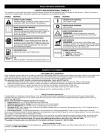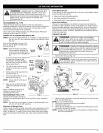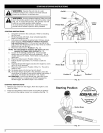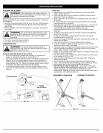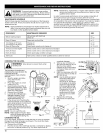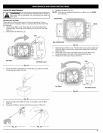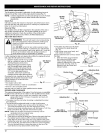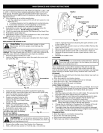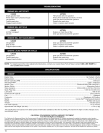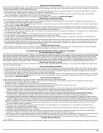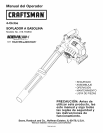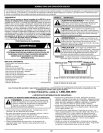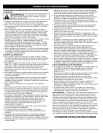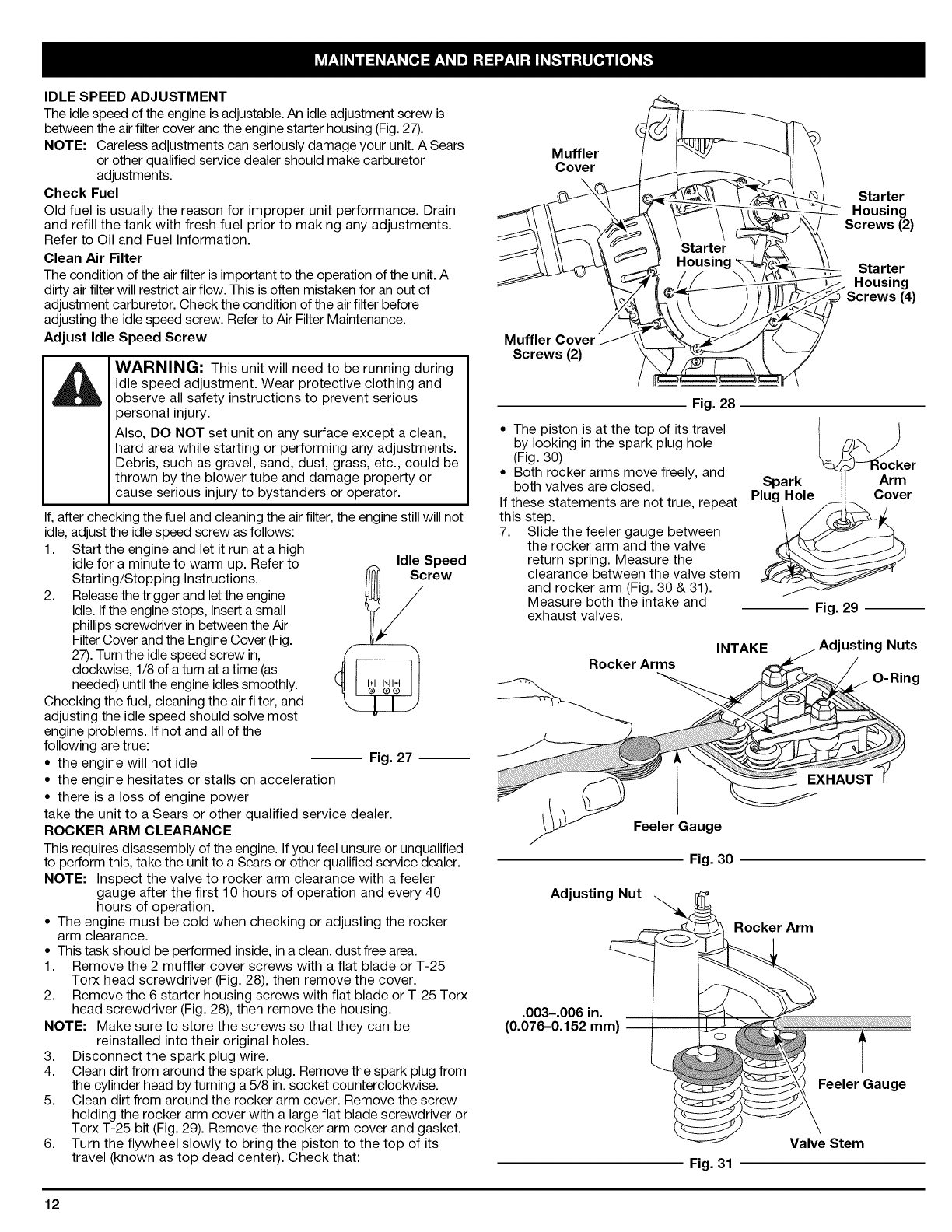
IDLE SPEED ADJUSTMENT
The idle speed of the engine is adjustable. An idle adjustment screw is
between the air filter cover and the engine starter housing (Fig.27).
NOTE: Careless adjustments can seriously damage your unit. A Sears
or other qualified service dealer should make carburetor
adjustments.
Check Fuel
Old fuel is usually the reason for improper unit performance. Drain
and refill the tank with fresh fuel prior to making any adjustments.
Refer to Oil and Fuel Information.
Clean Air Filter
The condition of the airfilter is important to the operation of the unit. A
dirty air filter will restrict airflow. This is often mistaken for an out of
adjustment carburetor. Check the condition of the air filter before
adjusting the idle speed screw. Refer to Air Filter Maintenance.
Adjust Idle Speed Screw
WARNING: This unit will need to be running during
idle speed adjustment. Wear protective clothing and
observe all safety instructions to prevent serious
personal injury.
Also, DO NOT set unit on any surface except a clean,
hard area while starting or performing any adjustments.
Debris, such as gravel, sand, dust, grass, etc., could be
thrown by the blower tube and damage property or
cause serious injury to bystanders or operator.
If, after checking the fuel and cleaning the air filter, the engine still will not
idle, adjust the idle speed screw as follows:
1. Start the engine and let it run at a high
idle for a minute to warm up. Refer to
Starting/Stopping Instructions.
2. Release the trigger and let the engine
idle. If the engine stops, insert a small
phillips screwdriver in between the Air
Filter Cover and the Engine Cover (Fig.
27).Turn the idle speed screw in,
clockwise, 1/8 of a turn at a time (as
needed) until the engine idles smoothly.
Checking the fuel, cleaning the air filter, and
adjusting the idle speed should solve most
engine problems. If not and all of the
following are true:
• the engine will not idle
Idle Speed
Few
-- Fig. 27 --
• the engine hesitates or stalls on acceleration
• there is a loss of engine power
take the unit to a Sears or other qualified service dealer.
ROCKER ARM CLEARANCE
This requires disassembly of the engine. If you feel unsure or unqualified
to perform this, take the unit to a Sears or other qualified service dealer.
NOTE: Inspect the valve to rocker arm clearance with a feeler
gauge after the first 10 hours of operation and every 40
hours of operation.
• The engine must be cold when checking or adjusting the rocker
arm clearance.
• This task should be performed inside, in a clean, dust free area.
1. Remove the 2 muffler cover screws with a flat blade or T-25
Torx head screwdriver (Fig. 28), then remove the cover.
2. Remove the 6 starter housing screws with flat blade or T-25 Torx
head screwdriver (Fig. 28), then remove the housing.
NOTE: Make sure to store the screws so that they can be
reinstalled into their original holes.
3. Disconnect the spark plug wire.
4. Clean dirt from around the spark plug. Remove the spark plug from
the cylinder head by turning a 5/8 in. socket counterclockwise.
5. Clean dirt from around the rocker arm cover. Remove the screw
holding the rocker arm cover with a large flat blade screwdriver or
Torx T-25 bit (Fig. 29). Remove the rocker arm cover and gasket.
6. Turn the flywheel slowly to bring the piston to the top of its
travel (known as top dead center). Check that:
Muffler
Cover
\
Starter
Housing
Screws (2)
Starter
Housing
(4)
Muffler Cover
Screws (2)
Fig. 28
• The piston is at the top of its travel
by looking in the spark plug hole
(Fig. 30)
• Both rocker arms move freely, and
both valves are closed.
If these statements are not true, repeat
this step.
7. Slide the feeler gauge between
the rocker arm and the valve
return spring. Measure the
clearance between the valve stem
and rocker arm (Fig. 30 & 31).
Measure both the intake and
exhaust valves.
Rocker Arms
Spark
Plug Hole
Arm
Cover
INTAKE
Fig. 29
Adjusting Nuts
O-Ring
Feeler Gauge
Fig. 30
Adjusting Nut
Rocker Arm
.003-.006 in.
(0.076-0.152 mm)
Feeler Gauge
Fig. 31
Valve Stem
12



